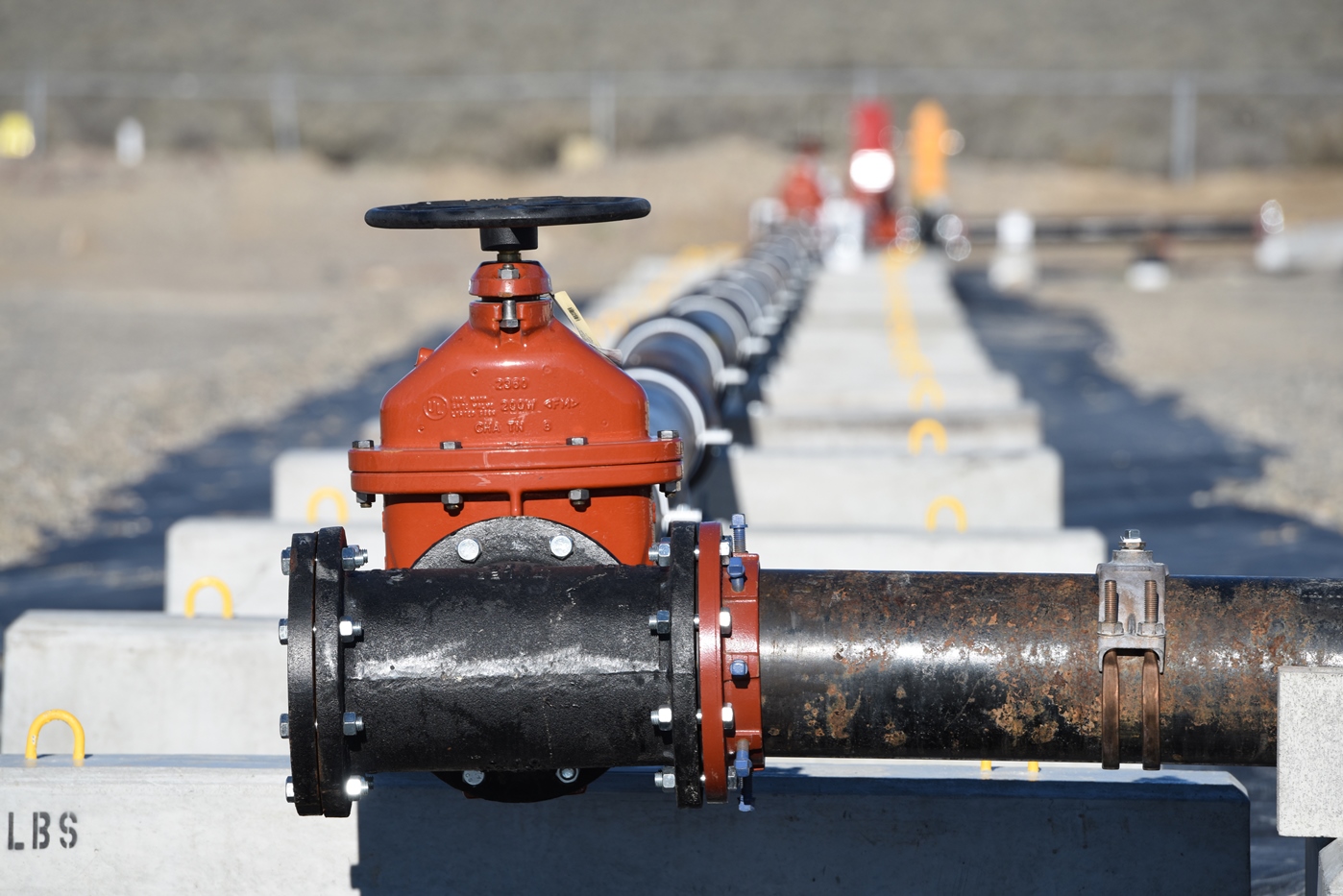Idaho test bed focuses on municipal water security
When it comes to infrastructure security, the focus is often likely to be on computer networks or the electrical grid, the importance of which nobody can rationally dispute.
Still, what do people rely on even more than money in the bank or lights on in their homes?
Water.
Water is the foundation for life. People use water every single day to meet their domestic, industrial, agricultural, medical and recreational needs.
Americans often take for granted the availability of clean, safe water, which is crucial for the health and prosperity of our nation. To help ensure our water security, the U.S. Environmental Protection Agency (EPA) has built the Water Security Test Bed (WSTB) at Idaho National Laboratory to focus on improving America’s ability to safeguard our water systems, and to respond to contamination incidents and to natural disasters. Research at the WSTB will help develop methods for decontaminating pipes and equipment and designing a better, more resilient infrastructure.
“Nothing can bring a community or region to its knees faster than the loss of potable water,” said Mike Carpenter, the INL program manager for the WSTB.
A community with disrupted water for any amount of time is going to feel the pain, from both health and economic perspectives. Getting clean, safe water back in service as quickly as possible is always a priority.
For example, when a tank at Freedom Industries in Charleston, West Virginia, leaked 7,500 gallons of methylcyclohexane methanol (a chemical used in cleaning coal) into the nearby Elk River in January 2014, up to 400,000 people in nine counties were without access to potable water for several days. Industries that relied on clean water, such as the food and beverage industry, were also affected.
After the September 2001 terrorist attacks, water system security became a higher priority in the United States. The WSTB can be used for research related to detecting and decontaminating chemical, biological, or radiological agents following an intentional or natural disaster. In fact, as water systems become more automated, scientists are adding a cybersecurity research element to the WSTB to test and create a better, more secure infrastructure.
Research at the WSTB takes place in the desert west of Idaho Falls, at INL’s Critical Infrastructure Test Range Complex. The area measures 600 feet by 300 feet and uses 4- to 8-inch cast iron and ductile iron pipe more than 40 years old. As the WSTB evolves, a new water service line will be connected to a building adjacent to the WSTB, to simulate water use in a bathroom, kitchen and laundry facility.
“The Water Security Test Bed has been constructed with excavated water pipe from a decommissioned INL facility. All the fittings, valves, hydrants, sensors and telemetry equipment were assembled from off-the-shelf commercial products in order to best simulate the conditions within existing drinking water utilities,” explained John Hall, an EPA researcher at the WSTB.
“We’re replicating real-life conditions in a controlled environment,” Carpenter said. “One experiment might involve contaminating household appliances with specific pathogens to see what kind of decontamination methods, materials and systems are needed to clean them. Researchers could also be modeling what would happen if terrorists launched a cyberattack that spoofs water quality sensors, thereby giving false water quality data to water infrastructure control systems.”
The iron pipe with cement-mortar lining used in the WSTB is essential to the research because this type of pipe is likely to be found in a typical U.S. city.
“On the inside it may have biofilm, mineral deposits, and it could be very corroded where the cement lining has chipped away,” said Jeff Szabo, an EPA researcher. “It’s all crusty and potentially corroded. Old pipe tends to absorb things differently than newer pipe.”
One experiment analyzed the persistence of contamination in a simulated large municipal system using Bacillus spores that behave much like anthrax but are otherwise relatively benign.
“We’re finding that what we’ve seen at the pilot scale is not necessarily the same at the Test Bed, and this further informs our research and the decontamination recommendations we would provide to communities,” added Szabo. “This is important research so we can actually simulate what could happen in real water infrastructure.”
In general, highly corroded pipe can rob a system of the residual chlorine needed to prevent regrowth of bacteria and pathogens. With the pipe system at the test bed all above ground, researchers are testing elevated concentrations of chlorine and other disinfectants to decontaminate the pipes. They are also testing portable treatment units to treat water collected in a 28,000 gallon lagoon built adjacent to the pipes.
Work at the WSTB got started after INL teamed up with the EPA’s National and Homeland Security Research Center to create the $1.75 million project. The first experiments were completed in September and October 2014 and are ongoing.
EPA and INL are planning additional experiments using the current setup, and they have additional excavated water conveyance pipes to expand the system’s configuration. They are seeking collaboration with other federal partners and water sector researchers and would like to design the next phase of the WSTB to meet collaborators’ research needs.
“It’s important for us to know what to do if our water becomes contaminated,” Szabo said. “If contaminants persist on the inside of drinking water pipes, we need to know how to decontaminate them.”
WATCH: Water Security Test Bed Video
For more information, or to explore collaboration opportunities, please contact Jim Goodrich at EPA or Mike Carpenter at INL.
For more information on EPA’s water security research please visit http://www2.epa.gov/homeland-security-research.










